- Rishikesh, India
- For how long must I stay in Rishikesh in order to get the complete experience?
- Can I travel solo as a female to Rishikesh?
- What are the accommodation options available in Rishikesh?
- What is the best way to get to Rishikesh from other major Indian cities?
- What do I need to bring for the Rishikesh spiritual retreat?
- The Spiritual Significance of Rishikesh
- Rishikesh – The Holy Land of Yoga, Its History and Its Culture
- The Gateway to Higher Consciousness
- Sacred Temples and Rituals
- Energy Vortex of Transformation
- Modern Spiritual Tourism
- Temples and Ashrams of Importance
- Iconic Bridges and Ghats
- Cultural Significances
- Meditation and Yoga Sessions
- Sacred Rituals Along the Ganges
- Temple Visits and Blessings
- Spiritual Learning Programs
- Sound Healing and Kirtan
- Adventure Activities
- Natural Beauty and Surroundings
- Mountain Vistas
- Ganges’ Riverside Tranquility
- Flora and Fauna
- Natural Springs
- Ideal Visiting Time
- How To Reach Rishikesh
- Planning Based on Activities
- Essential Travel Tips
- Traveling Advice
- In terms of financial issues
- conclusion
- FAQs
Rishikesh, India
Let your soul wander in Rishikesh, a place where one can dive deep into spirituality while also experiencing heart-racing activities nestled in the Himalayas. Rishikesh, Known as the yoga capital of the world, Rishikesh is set along the River Ganga and is heaven for those looking for a perfect blend of diving activities and unique experiences.
Are you ready to experience this spiritual wonder and set on a journey unlike anything you’ve ever been on? We have compiled a list of places for tourists to visit in Rishikesh, ranging from the Beatles Ashram to the mesmerizing Lakshman Jhula Bridge.
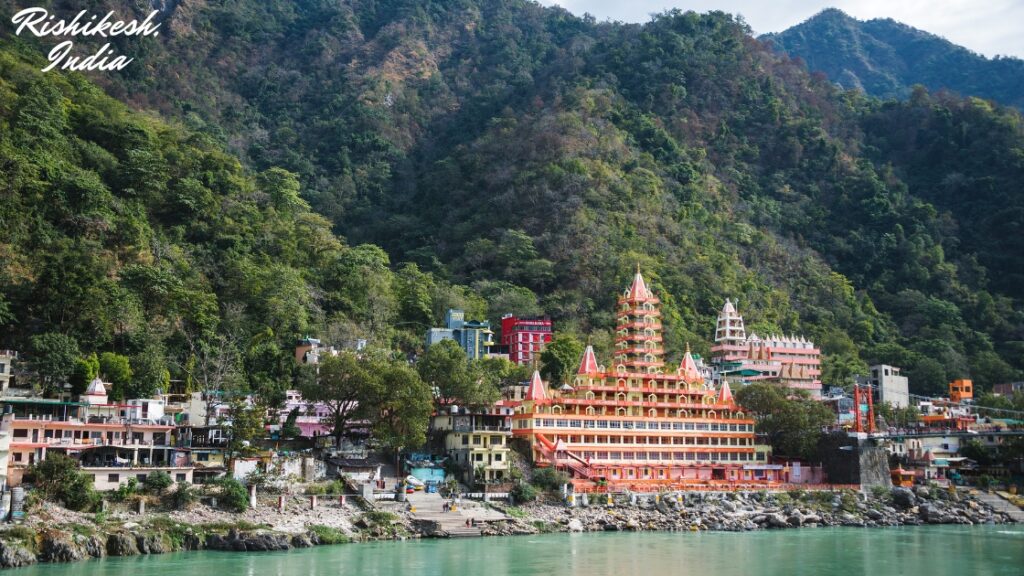
Planning a trip to the city of Rishikesh for some Ganga Aarti (meditation) while also managing to fit in some white water rafting? Whatever it is that you are looking for, we have a detailed guide for you that will help you find:
• Calming temples that echo with voices chanting sacred prayers
• Hidden treasures that most tourists do not visit
• Heart-racing landmarks for those who seek adventure
• Calm Bohdi Tree meditation center in Ganga River Rishikesh for spiritual awakening
Let us take you to the world of the extraordinary.
Rishikesh is a city with landmarks such as The Beatles Ashram and the Lakshman Jhula suspension bridge which enhance its global tourism appeal. -Witness the divine by the Ganges River such as in the ancient Raghunath Temple and during the mesmerizing Ganga Aarti at Parmarth Niketan Ashram. -There are plenty of stones to climb and pieces of water to White-water raft for adventure seekers. -People interested in spirituality can visit numerous ashrams for yoga, meditation, and Sanskrit for a transformable experience. -Rishikesh is best visited outside of India’s monsoon season for maximum enjoyment of the spiritual practices and outdoor activities it provides.
The Spiritual Significance of Rishikesh
For centuries, seekers and devotes have sought out Rishikesh in the foothills of the Himalayas due to its profound spiritual significance. The city with the holy river Ganges is more than just a collection of landmarks, it is known as a spiritual haven with ancient wisdom and transformable energy.
Rishikesh – The Holy Land of Yoga, Its History and Its Culture
Words can’t describe how mystical the word ‘Rishikesh’ sounds. It means ‘Kesh’, which in Sanskrit, translates into ‘Tresses’ or ‘Hair’ and Rishi means ‘Sage.’ According to legends, the name is derived from the fact that lord Vishnu appeared at this place to bless sages who carried deep meditative practices. Rishikesh is known as the confluence of divinity and devotion.
The Gateway to Higher Consciousness
Blessed with spirituality, the city is home to numerous meditation centers and ashrams. Each of them allows the practitioner to detach and immerse themselves into ancient practices like yoga and meditation in hopes of attaining enlightenment. This is the reason Rishikesh is known to serve as the world’s capital of yoga, claiming the title of ‘the gateway of higher consciousness.’
Sacred Temples and Rituals
Ganga Aarti at Parmarth Niketan is the most witnessed performance of art in Rishikesh. It includes the ritual offering of lighting (without the holder) to the river to pay respects. The activity is conducted at sunset with the aim of paying homage to the river. The celebration gathers hundreds of people in hopes of watching the awe-binding event.
Energy Vortex of Transformation
Acclaimed spiritual masters claim Rishikesh is surrounded by a unique geographical condition, an energy vortex, which makes it the center of immense self-realization and growth. This energy vortex is created when the Ganges river meets the mighty Himalayan mountains, creating an environment perfect for spiritual followers seeking transformation.
Modern Spiritual Tourism
Despite its ancient spiritual nature, Rishikesh has progressed to serve the modern spiritual seeker. International yoga festivals, meditation retreats, and other spiritual workshops incorporate these contemporary practices with traditional wisdom, forming a spiritual ecosystem that rouses interest across the globe.
Temples and Ashrams of Importance
Neelkanth Mahadev Temple, Rishikesh, India
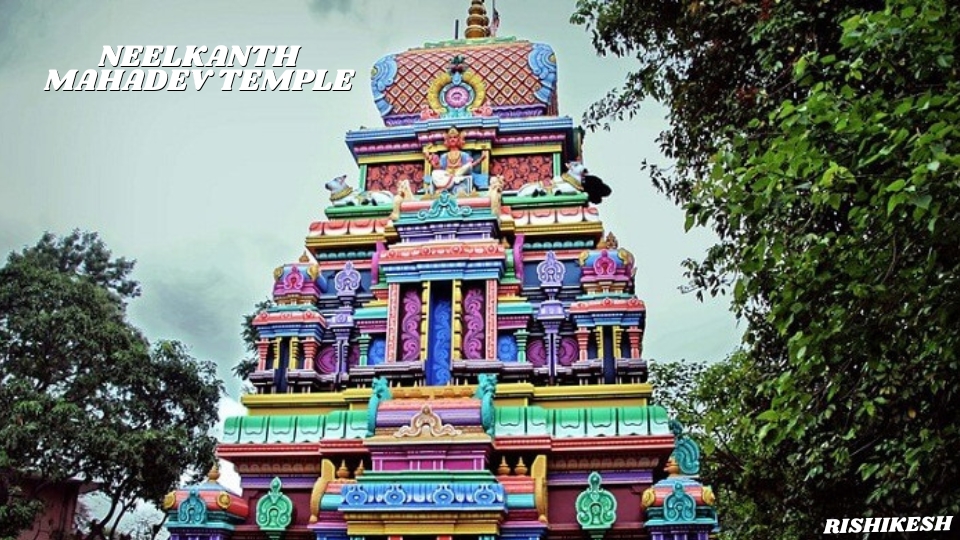
The Neelkanth Mahadev Temple is one of the temples that are situated 1330 meters above sea level and is based on the statue of Lord Shiva. As per Hinduism, this is regarded as the place where Lord Shiva drank the poison that turned his throat blue. The temples include intricately detailed wooden carvings and are built using the traditional style of North Indian temples.
Trayambakeshwar Temple, Rishikesh, India
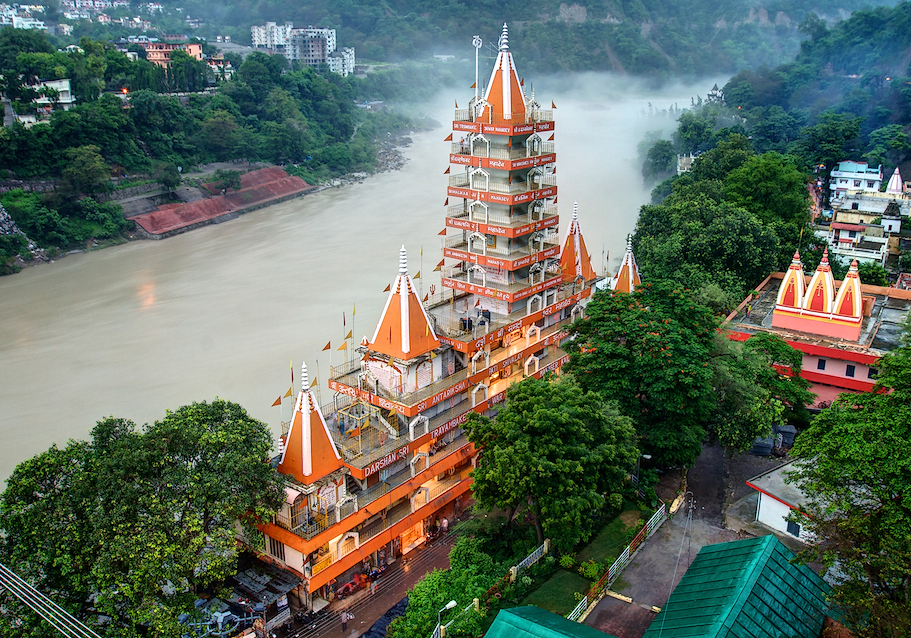
The 13-story unraveled architectural marvel Trayambakeshwar temple is located on the banks of the Ganges, A gold statue of Bhagwan Shiv is placed in a fountain that marks the center of the temple’s main courtyard that serves as the prayer hall. Each floor has a different deity in a shikhara style. The temple’s remarkable elements are the meditation caves which allow the spiritual seekers to spend hours lost in thought.
Parmarth Niketan Ashram, Rishikesh, India
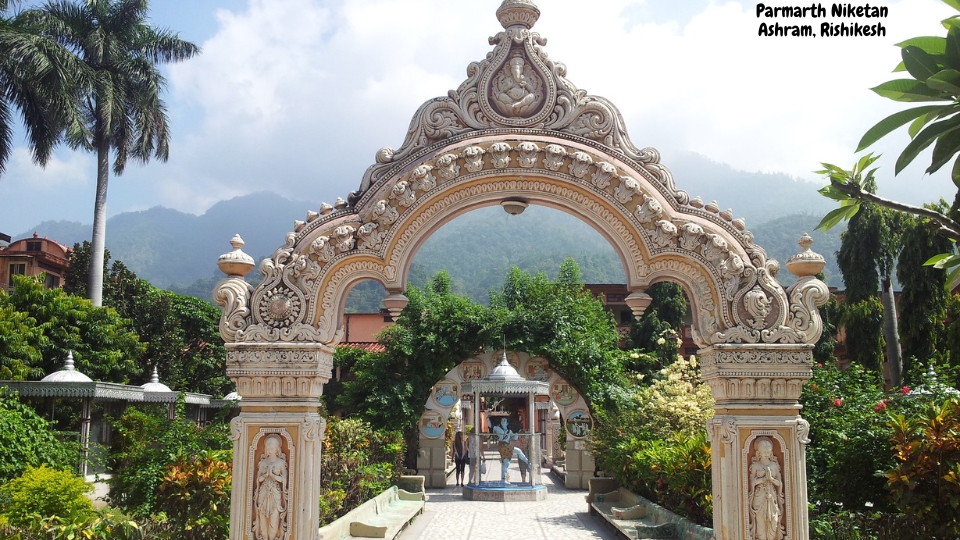
Located in Rishikesh, one of the largest Etheric Leaving for ashrams is the Parmarth Niketan ashram allows for calmness and the means for spiritual growth. There are various yoga sessions and meditation classes held daily. The evening Ganga Aarti is well known. It has peaceful gardens and neat shelves which makes it an ideal place for retreats for those looking for inner peace.
Sivananda Ashram, Rishikesh, India
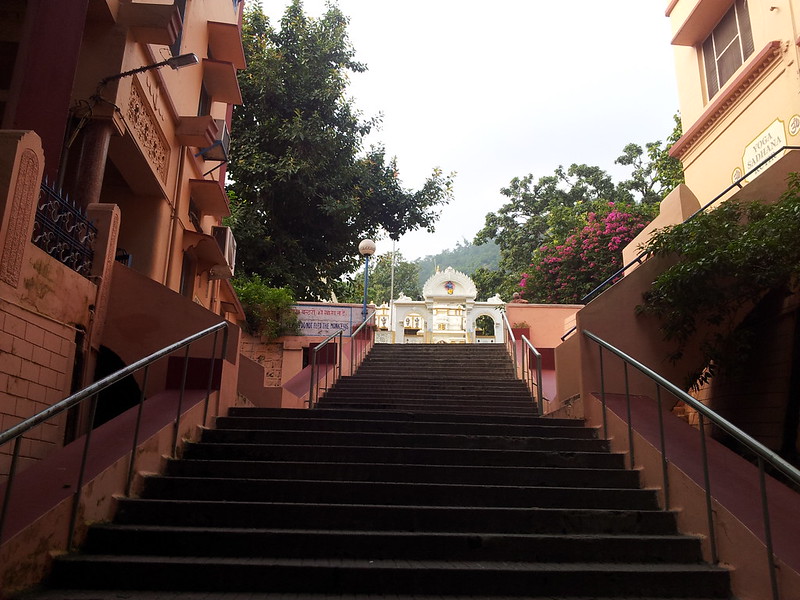
Swami Sivananda loved this ashram so much. The basics of it are to serve humanity through yoga and meditation. The ashram has a tough daily routine that starts at 4 AM and includes meditation, chanting, and yoga practices. Tourists get a chance to partake in different spiritual lectures and workshops all throughout the year.
Swarg Ashram, Rishikesh, India
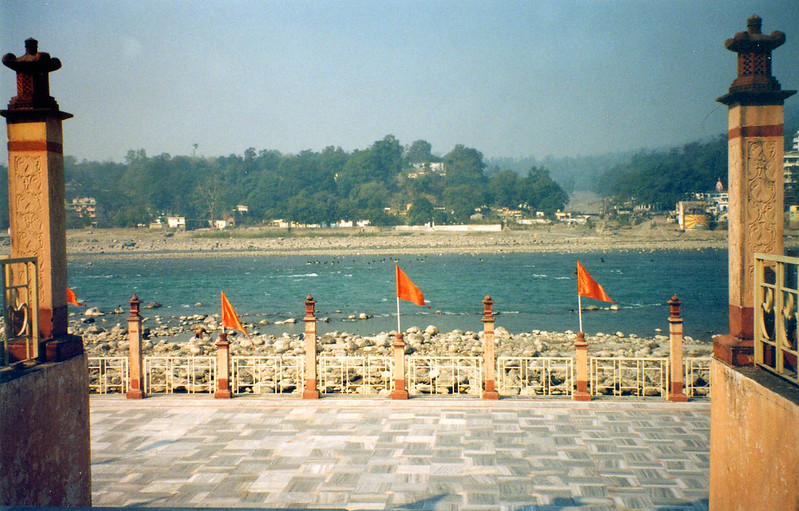
This ashram is in a quiet region around Lakshman Jhula which tremendously helps with the peaceful atmosphere of the area, making it worth the spiritual teachings. Inside the ashram, you will find a lot of temples, meditation rooms, and even old library books that contain ancient spiritual texts. Their Ayurvedic treatment center and yoga teacher training programs are particularly well known.
Iconic Bridges and Ghats
Laxman Jhula| Ram Jhula| Triveni Ghat
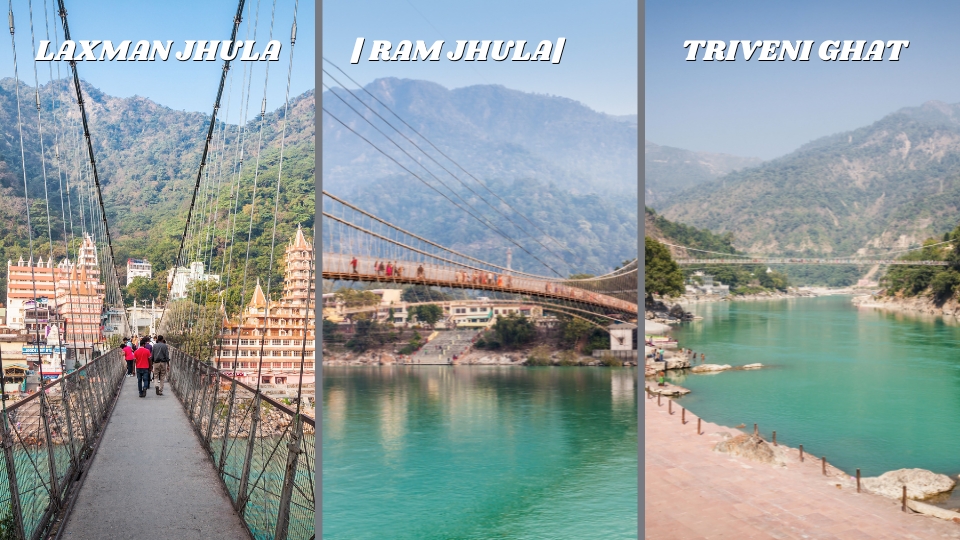
Rishikesh’s bridges and famous ghats have their own importance, these bridges tell a story alongside being standpoints of devotion and artistic wonder. These structures serve as practical crossings while being spiritual landmarks.
This 450-foot iron suspension Lagman Jhula bridge, constructed in 1929 is considered a holy bridge. Alongside being impressive, it also stands proof of Rishikesh’s importance as a religious spot. The bridge stands where, according to myth, Lord Ram’s brother Lagman is said to have crossed the Ganges River using a jute rope. During that time multiple such jute bridges existed, which leads us to state that Lagman Jhula was the ultimate solution in bridging the gap.
Lagman Jhula focuses on gaping views of the man Ganga River alongside the mountains in the background. The second most popular bridge in Rishikesh, Ram Jhula is located 2 kilometers downriver from Lagman Jhula and connects Sargashram to Sivananda Nagar. Ram Jhula was newly constructed in 19986 and spans over 750 feet long, which makes accessing temples and prominent ashrams easy. Alongside this, it is also surrounded by busy spiritual parts, which helps consolidate it as a popular tourist destination.
Triveni Ghat is known as the busiest ghat in Rishikesh and serves as the conclusion to the mighty Ganga Aarti. It is said to be the mingling point of three holy rivers- Ganga, Yamuna, and Saraswati which attract thousands of people per day. The ghat features multiple platforms alongside taking holy dips where devotee performs their daily rituals.
Cultural Significances
Rishikesh’s Garh, which is a popular tourist site in the city provides an important viewpoint of the combination of artistry and faith through the spectacular Aarti held on the banks of Ganga. The ghat possesses a fine cut out of deities and is one of the largest temples in the city, standing at a great height of 13 floors.
Meditation and Yoga Sessions
Yoga and Meditation form an integral part of everyone’s life in the city which makes it an important place for meditation. One can find a variety of meditation sessions across ashrams and temples in the city with many offering services at Sivananda Ashram and Swarg Ashram, which are well known for offering meditation guided by trained instructors.
Sacred Rituals Along the Ganges
The beginners of Inner contemplation are served best by self-guided meditation, especially during the serene early mornings. Alongside the sacred banks of Ganga, Rishikesh is famous for the Ganga Aarti held at sunset with thousands of devotees coming together alongside the synchronized worshiping of brass lamps accompanied by bells and rhythmic chanting of mantras.
Temple Visits and Blessings
The ancient temples in the city act as spiritual pillars of great importance. One such temple is Neelkanth Mahadev, which is dedicated to Lord Shiva. It is perched at 1,330 meters and serves a special purpose. Traveling to it offers participation in traditional puja ceremonies, after which visitors receive blessings from priests of the temple. Devotees who want to achieve divine connection flock to Bharat Mandir, the oldest temple in Rishikesh.
Spiritual Learning Programs
These institutions organize variegated programs for people on the quest for deeper understanding. These programs include but are not limited to Vedic studies, lectures on Sanskrit, and Philosophical discourses. The International Yoga Festival is held once every year, during the months of March and April at Parmarth Niketan. During this event, spiritual leaders and practitioners from around the globe come and offer a chance for immersive learning.
Sound Healing and Kirtan
The kirtan and sound healing ceremonies aid in bettering the mental and physical state of beings through the sacred kirtan sounds. Evening bhajans are held by several ashrams and it allows visitors the chance to indulge in devotional singing. The sound waves produced during the mantras along with classical instruments enhance the atmosphere, making it easier for people to meditate and grow spiritually.
Adventure Activities
White Water Rafting
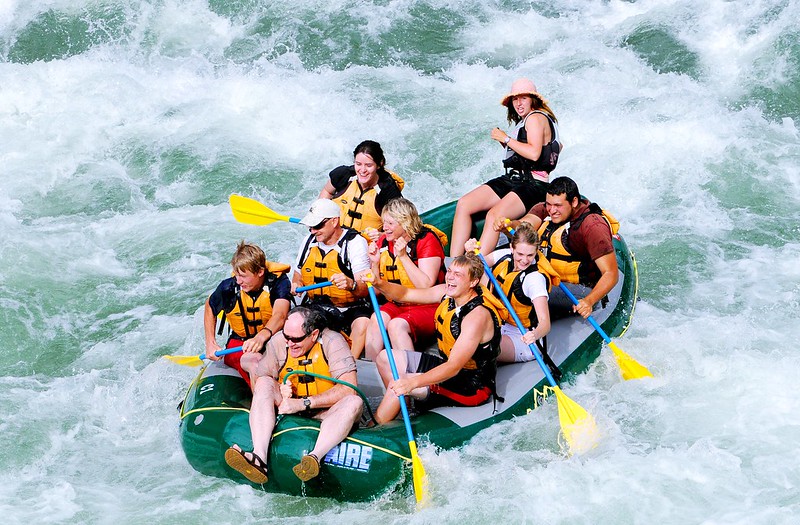
Dare to try out White Water rafting in Rishikesh for a unique experience of riding the waves of the Ganges. Depending upon the skill level, rafters can choose from inflating Grade I to electrifying Grade IV rapids. Most rafters’ favorites include the stretch from Shivpuri to Laxman Jhula which is about 16 kilometers long.
Bungee Jumping

If you are seeking the ultimate thrill, the highest bungee jump in India is located at Mohan Chatti village in Rishikesh, at a platform 83 meters high. The jump allows you to safely freefall while being suspended from a sturdy cord. This extreme sport’s breathtaking views of the valley below are truly awe-inspiring.
Rock Climbing
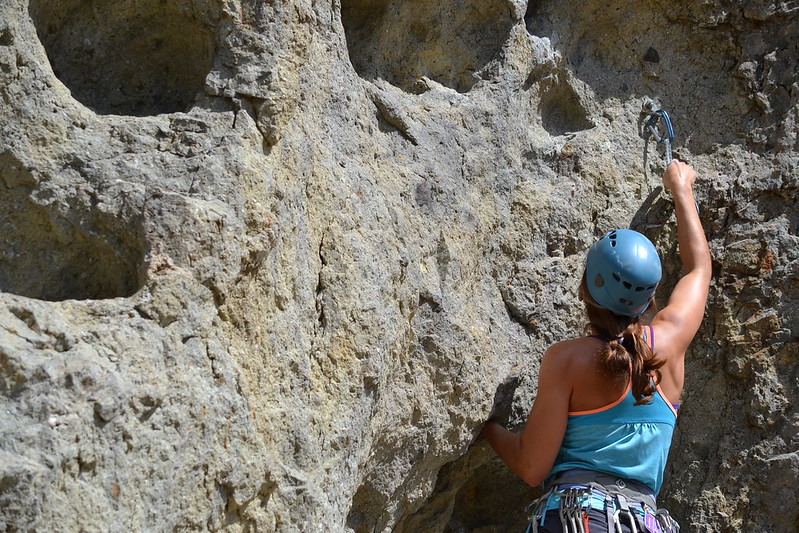
Rishikesh’s surrounding topography is perfect for Rock Climbers. The natural rock features by the bank of the Ganga River are multi-faceted and range from simple climbs for beginners all the way up to advanced routes for experienced climbers. Professional instructors and safety gear are inclusive.
Cliff Jumping
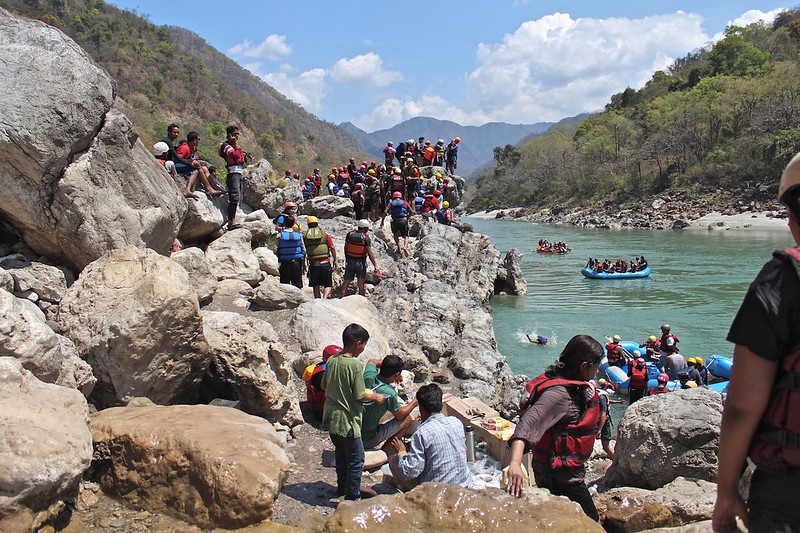
Strengthen your willpower and your diving skills by cliff jumping off multiple high rocks faces above the Ganges. Many guides recommend the area near Shivpuri where height ranges between 20 to 30 feet, as the most popular spot. Here, trained jumpmasters take you through the proper jumping procedures.
Flying Fox

Flying Fox Adventures offers the opportunity to fly across the Ganges Valley! It is a 1-kilometer zipline that allows you to zoom over the river and mountains that surround the area. Participants must be aged twelve or older and are guaranteed to have fun while following the safety protocols that are set in place.
Kayaking
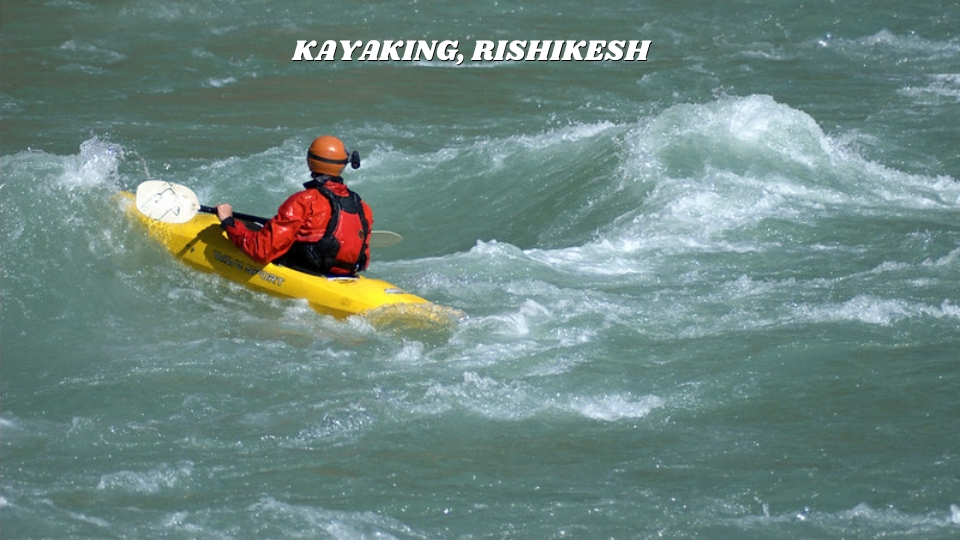
Take a break, relax, and enjoy the environment by taking part in this activity that aids in the improvement of your river navigation skills – kayaking! Professional instructors are available to help guide you through the calm sections of the Ganges and provide both basic and advanced techniques for an enjoyable experience.
Natural Beauty and Surroundings
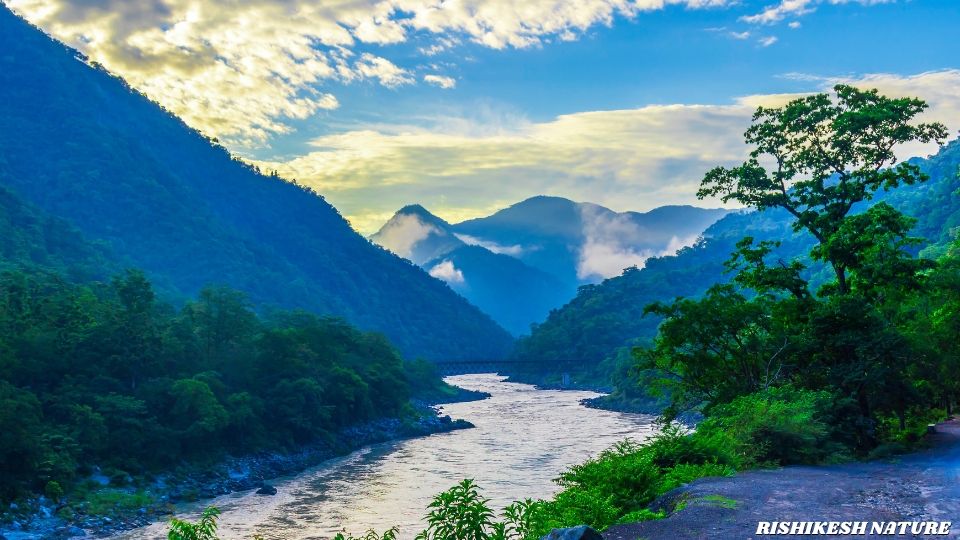
Rishikesh is located in the Himalayas and therefore captures visitors throughout the year due to the unique and scenic landscapes, natural beauty, and change in environment. Ganges River, well known for its crystal clear water, flows through the middle of the city and it reflects the mountains that surround it making it look as if it has a mirror under it.
Mountain Vistas
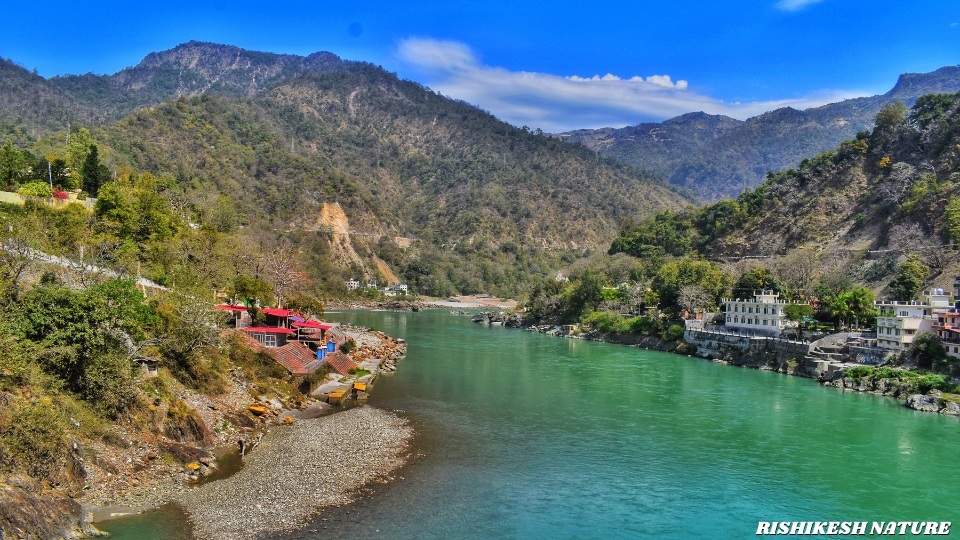
The snow-capped peaks in the distance outline the stunning backdrop that the majestic Himalayan foothills create. It is the perfect spot for meditation and self-reflection due to the serene atmosphere that is provided by the dense forests filled with sal trees and deodar trees that cover the slopes and act as a sanctuary for different wildlife.
Ganges’ Riverside Tranquility
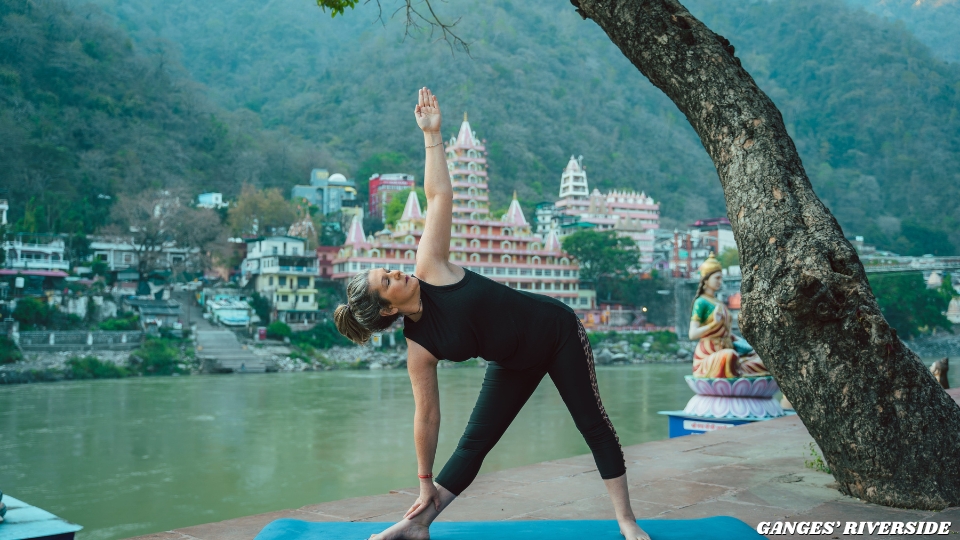
Those who take a trip to the Ganges’s banks can find quiet and peaceful places to quietly think and relieve stress. Visitors can sit and watch the sunset over the mountains or cool off by dipping their feet into the mountain water at the white sandy beaches beside the river.
Flora and Fauna
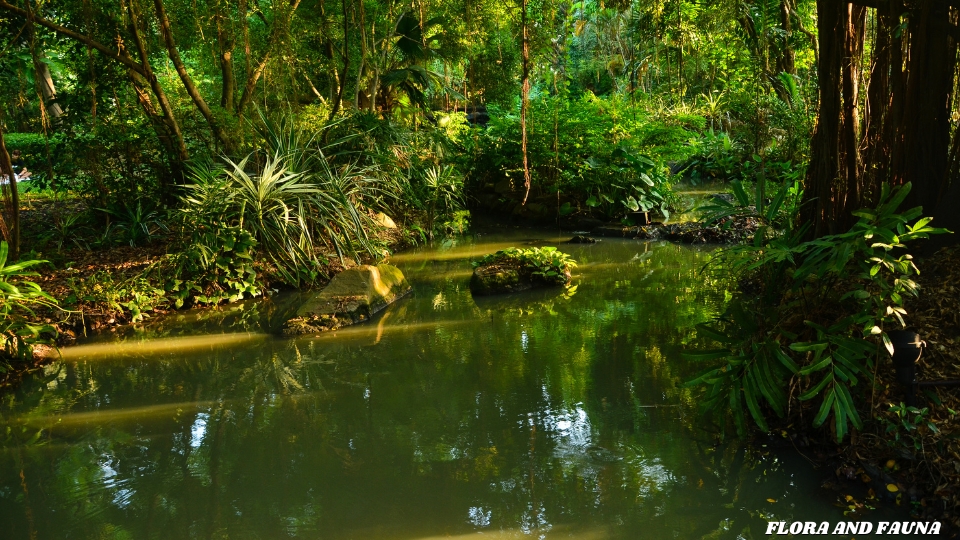
The region contains rich wildlife with a wide variety of colorful birds, rhesus Macaque, and langurs. These plants serve the purpose of natural medicine, and herbs can be found in the dense forests nearby, truly lucky visitors might get the chance to spot these animals.
Natural Springs
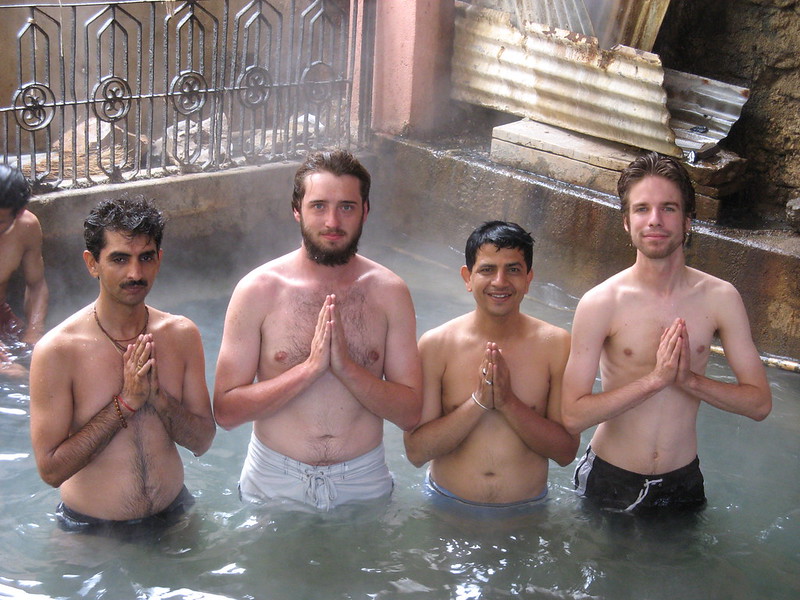
Around the hills, there are many hot springs hidden that provide therapeutic care. These springs contain a lot of minerals that are believed to heal and serve as a spa in the middle of nature.
Ideal Visiting Time
If you want to get the true experience of a spiritual sanctuary, we recommend planning the right time for your visit. The city’s seasonal activities and weather patterns play an important role in knowing the ideal time for your trip.
Best Time to Visit (March to April)
If you love temples, river rafting, and camping, spring is the right season for you. The temperatures are perfect for the season, ranging from 20 degrees to 35 degrees. The local culture is rich, and festivals will offer a deeper understanding. From March to April, the weather is great and one can indulge in every outdoor activity and adventure that you can think of.
Moderate Season (September to November)
Post-monsoon autumn is picturesque with wonderful skies and average temperatures perfect for nature walks. The Ganges is calmer during this season, so white water rafting is a great option. The temperature during this season ranges from 15 degrees to 30 degrees, offering easy and comfortable activities like photography and nature walks.
Planning During Off-Season
Outdoor activities become increasingly difficult during the summer season as temperatures surpass 40 degrees – this is the case for May and June. Adventure sports are not suitable during monsoon due to the extreme risk of landslides and heavy rainfall. Winter sounds suitable to continue activities such as exploration, but the temperatures are extremely low, dropping to 5 degrees, making it very difficult.
How To Reach Rishikesh
Rishikesh is located in the foothills of the Himalayas in Uttarakhand, making it easy to reach by air, rail, or road. Here’s how to reach the adventure and spiritual hub:
By Air
The Jolly Grant Airport is the nearest airport to Rishikesh, located in Dehradun which is only 20 km away from Rishikesh. The airport receives flights from Delhi and Mumbai and is well-connected to other major cities. You can take a taxi or a shared cab from the airport, and it will take about 45 minutes to reach Rishikesh.
By Train
The Haridwar Junction is the closest railway station and is located 25 km away from Rishikesh. Haridwar station also has a number of trains coming in from major cities like Delhi, Mumbai, and Kolkata. From Haridwar, you can take an auto-rickshaw or a local bus and reach Rishikesh within a few minutes.
By Road
North Indian cities are well connected to Rishikesh via roads.
From Delhi, Rishikesh is approximately 240 kilometers away and can be reached within 5-6 hours by NH334. Pickup taxis, self-drive cars, and government and private buses are easily available.
From Dehradun, Rishikesh is around 50 km away and takes 1.5 hours to reach.
From Haridwar Rishikesh is 25 km away and takes around 45 minutes to reach.
Buses are regularly traveling from Delhi, Haridwar, and Dehradun. The buses include both AC and non-AC options as well as Volvo.
By Shared Taxis and Cabs
The locals and transport companies have made shared taxis and private cabs available from Haridwar and Dehradoon, making it easy for a few or solo travelers to commute.
Rishikesh is easily accessible, making it a hotspot for spiritual, adventurous, and all types of tourists from around the globe.
Planning Based on Activities
Adventurous sports like rafting are best suited for post-monsoon. If you prefer between spring and autumn, early morning yoga sessions will be comfortable, and an enjoyable experience. Spiritual seekers might find deeper enjoyment during festive months such as the International Yoga Festival in March.
Traveling to Rishikesh in March-April or September-November is recommended if you wish to avoid extreme temperatures while comfortably participating in both spiritual and adventure activities.
Essential Travel Tips
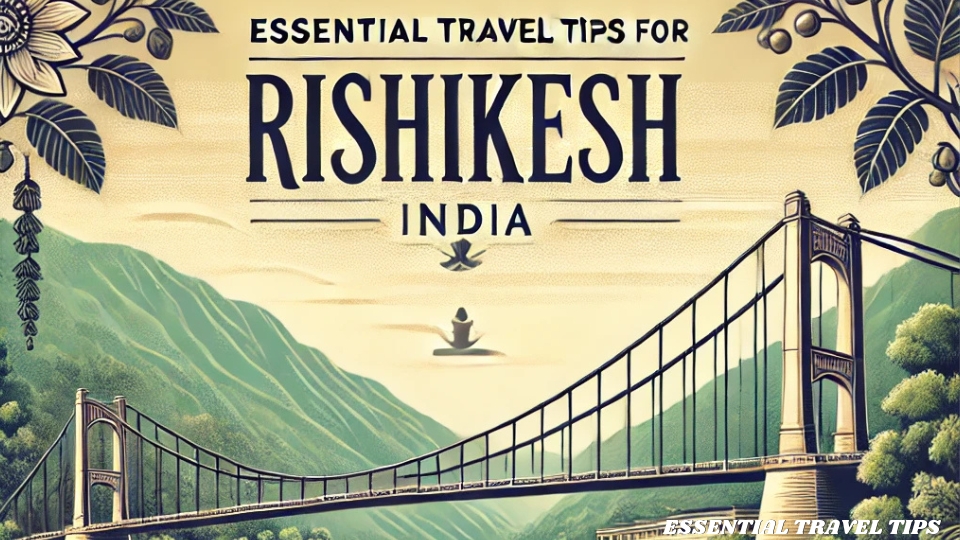
Pack According to Season
For summer visits (March to June), bring along cotton clothes, sunscreen, and a hat. Don’t forget sneakers as there will be a lot of walking to do! During winter visits (October to February), remember to put on warm clothes including sweaters and jackets. Rishikesh sees a variation in temperatures throughout the year.
Respect Local Customs
Considering Rishikesh is a holy city, do refrain from wearing revealing clothes and instead dress modestly while covering your knees and shoulders. Removing shoes before entering temples and ashrams is a must. Keep in mind that not only is Rishikesh a vegetarian city, but alcohol is strictly prohibited.
Safety Precautions
Filling out a basic first aid kit along with personal medications is recommended. Stick to bottled water and try to avoid drinking from water taps, especially during adventure activities such as bungee jumping or rafting. Make sure to choose licensed operators, to ensure safety guidelines are followed.
Traveling Advice
Book your room in a hotel that is near either Laxman Jhula or Ram Jhula so that you do not miss the major sites. For short distances, local auto-rickshaws are the best option – just make sure you agree on the fare before you hop on. The nearest airport to Rishikesh is Dehradun’s Jolly Grant Airport, which is the most convenient option.
In terms of financial issues
Make sure to have cash on you as most places accept cards but not for microtransactions or local rides. ATMs are available but might be non-existent in some regions. Cash is preferred for payments at most ashrams and spiritual centers.
Focus on: Remember that if you wish to visit Rishikesh, you need to plan according to the weather, pack correctly, follow customs, stay safe, and take cash for a pleasant and easy visit to the spiritual capital.
conclusion
Do not forget while preparing for this magical part of the Himalayas that Rishikesh is more than just a place, it is an experience that alters everyone in different ways. All the amazing rafting experiences on the sacred Ganges are best complemented by the thrilling chants laced within ancient temples, each moment blends to create unforgettable memories.
No matter if you are a spiritual person who loves practicing yoga and meditation or an adventure sports junkie, Rishikesh is ready to welcome you with open arms. With its powerful blend of spiritual culture and modern-day adventure, nobody will be bored as they venture in and around the city.
So what are you waiting for? Grab your bags and let us help you embark on this transformational and adventurous journey with Rishikesh being the capital of yoga. By embracing spiritual guidance while staring at the serene backdrop of the Himalayas, we can guarantee you will love your experience here.
Transformative experience in the lap of the Himalayas awaits you.
FAQs
When can I engage in adventure activities during my visit to Rishikesh?
March to May and September to November are the best months for adventure activities such as rafting and rock climbing. The weather during these months is pleasant and water levels are perfect, which encourages partaking in these sports. Avoid June to August as June marks the start of monsoon season and most adventure sports get suspended during this time.
For how long must I stay in Rishikesh in order to get the complete experience?
It is recommended to spend a minimum of four to five days in Rishikesh if you want to capture all of its spiritual and adventurous aspects. One will be able to see the major temples, go for yoga classes, enjoy the Ganga Aarti, experience the Himalayan backdrop, and participate in adventure sports within this timeframe.
Can I travel solo as a female to Rishikesh?
Indeed, Rishikesh is relatively safe for women traveling alone. Tourists from all over the globe give it a very international feel. It is, however, advisable to book a place to stay in very populated places and refrain from going to quiet areas after it is dark.
What are the accommodation options available in Rishikesh?
Rishikesh has a wide variety of places to sleep from budget hostels to luxury camps. Spiritual ashrams, riverside camps, boutique hotels, and homestays are also available. Most of these options are available in the northern part of Rishikesh as well as at the ghats.
What is the best way to get to Rishikesh from other major Indian cities?
Jolly Grant Airport in Dehradun is the nearest airport at around 20 kilometers. Rishikesh is well connected by normal buses and trains coming from Delhi, Haridwar, and several other towns. You can also get a taxi from Dehradun or hop on a shared cab heading towards Haridwar train station.
What do I need to bring for the Rishikesh spiritual retreat?
It is advisable to carry walking shoes, meditation seat cushions, and more culturally appropriate clothing. Do pack a yoga mat along with the essentials such as mosquito repellants and sunscreen. During winter months, light wool clothing is recommended.


Hello
We are interested in cooperation with you, we have some customers that are interested in your company offering, please contact us on whatsapp:+44 745 952 4614
Lets disscuss more, we are interested in long term business
+917464030017 contact me here, only whatsapp
I am really impressed along with your writing talents and also with the format for your weblog. Is that this a paid theme or did you modify it yourself? Anyway stay up the nice high quality writing, it is uncommon to peer a great blog like this one nowadays. !
Pingback: Best Offbeat Treks in Uttarakhand for Beginners: A Complete Guide 2025 » UTTARAKHAND
Pingback: 5 Best Romantic Places in Uttarakhand for Couples: A Complete Travel Guide » UTTARAKHAND
Pingback: Valley of Flowers: A Guide to Nature's Hidden Paradise » UTTARAKHAND
Pingback: Tungnath & Chopta: The Ultimate Himalayan Trekking and Spiritual Escape » UTTARAKHAND
Pingback: Bedni Bugyal Trek 2025: An Essential Guide For Your Himalayan Meadow Adventure » UTTARAKHAND
Pingback: Brahmatal Trek: An In-Depth Guide for An Adventurous And Memorable Journey In the Himalayas » UTTARAKHAND
Pingback: Top 5 Haunted Places in Uttarakhand: Spooky Tales & Locations » UTTARAKHAND